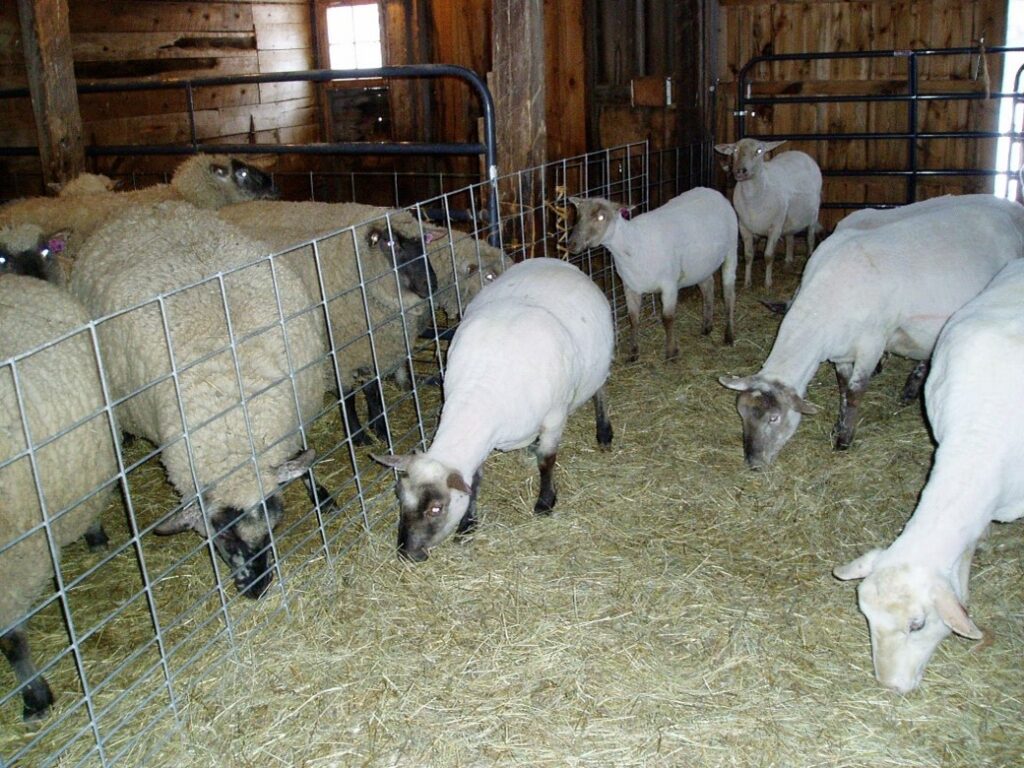Shearing Day on the Farm

The rhythms of spring are finally beginning to arrive this year, with daytime temps rising to the lower 40’s this week. It won’t be long before the robins arrive, and the chickadees are starting to sing their spring song of “Hey Sweetie” from the tips of the birch twigs.
Springtime means so many things on the homestead, and one of those is shearing time for the sheep. While wild sheep naturally shed their winter coat as spring arrives—rubbing it off on trees, rocks, and bushes for the birds to snatch up and line their nests—the domestication process selected for sheep that kept their coats. This meant people had to clip it off the sheep in springtime, which was more work but also a guarantee that the yield of precious fiber wouldn’t be lost on trees and rocks and bushes and bird nests.
Shearing needs to be a well-timed event. Sheep sweat through their skin, and leaving the full wool coat on too long can trap that sweat and cause serious skin issues. Think of that poor New Zealand ram that made the news the other year, who ran away for seven years until it was finally caught and shorn! That poor fella was going to need serious veterinary care, even after shearing. But if you remove the wool too soon (say when we had those bitterly cold temps earlier this winter), then the sheep cannot stay warm enough and struggle with hypothermia. Just like so many aspects of farming, things have to be timed out just right.
Shearing days start early, and Kara’s been out in the barn corralling the sheep, so they are easy to handle. Chris, our stalwart shearer, would set up his rig in the entrance if he’s slick shearing, or clip away with a hand shears if that was the choice of trimming for the day. The fleeces pile up on tarps, which we haul to the garage for sorting and skirting later. As our flock has grown to roughly 120 fluffballs, shearing has become a three-day affair, often yielding 800 lbs. of raw wool that we then take to the mill in LaFarge to be processed into yarn and roving for our shop and kits.
Kara had been working diligently in the barn for days getting ready, cleaning and organizing, fixing gates and moving sheep to different pens so it would be easy to bring them to the right place. Older ewes go first, then ram lambs, then the pregnant ewes expecting to deliver in mid-April.
Chris and Kara wear masks and stand far apart as they discuss the setup and strategize. There are also sheep diseases we want to prevent, and as shearers travel from farm to farm, they can be a way that these diseases spread. Years before COVID, we had protocol for preventing any spread, and Chris knows the routine—even helping us pick out special shearing shoes and coveralls that fit him best that we keep on hand and bring out each year for the occasion. Kara has a bucket of sanitizing solution for scrubbing up the shears. Some might see this as excessive, but it’s part of what has kept our flock clean of sore mouth, foot rot, and other dreadful, contagious sheep diseases—germs that, once they reach your farm, you can never get rid of them.
I am eager for the wool, as our stash of yarn and roving is being greatly depleted by the numerous Zoom-hosted fiber arts classes I’ve been teaching and project kits that have kept my new role in shipping and receiving hopping. And the sheep will be eager to shed that heavy coat of fleece that kept them warm all winter. While the process of shearing is not their favorite (sheep are very married to routine, and anything that is not routine is perceived as stressful), when Chris whirs the shears across their backs, they make these funny little lip movement as if this is the best back scratch they’ve had in months. Most, upon release, immediately find a pole to rub against in ecstasy.
Important agricultural events like shearing day help remind us that the natural rhythms and cycles of the year renew, even as we still have snow on the ground. What signs of spring will visit you this week? See you down on the farm sometime.





